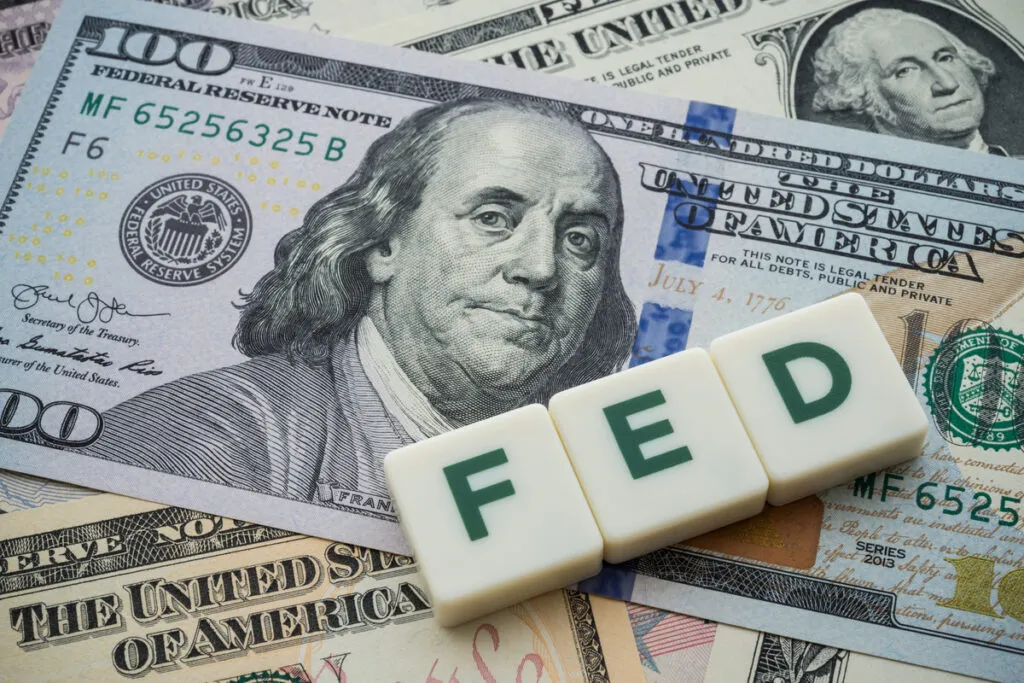When considering the financial landscape, one of the most influential entities is the Federal Reserve, especially with its significant impact on credit cards. For consumers navigating the intricacies of personal finance, understanding how the central bank’s policies translate to the interest rates on your plastic can prove invaluable. This knowledge empowers individuals to make more informed financial decisions, potentially leading to improved management of credit card debt and overall financial health.
Anúncios
The Federal Reserve, commonly referred to as the “Fed,” plays a crucial and multifaceted role in steering the economy. Its decisions, particularly those concerning the federal funds rate, ripple through various sectors, creating both direct and indirect effects on different facets of the financial system. These decisions significantly influence an individual’s cost of utilizing credit cards, as changes in the federal funds rate often lead to adjustments in the interest rates applied to credit cards by financial institutions
. This complex relationship between the Fed’s policy-making, the banking system, and consumer costs warrants a closer examination to fully grasp its implications on everyday financial practices. By delving deeper into how these mechanisms interact, one can gain a clearer understanding of the broader economic context and its impact on personal finance management strategies.
Anúncios
The federal reserve and its role

Established in 1913, the Federal Reserve is the central banking system of the United States. Its primary purpose is to promote maximum employment, stable prices, and moderate long-term interest rates. The Fed achieves these goals through various tools, with the most notable being the adjustment of the federal funds rate.
The federal funds rate is the interest rate at which depository institutions lend balances to other depository institutions overnight. By altering this rate, the Fed aims to influence economic activity. A lower rate encourages borrowing and investment, whereas a higher rate seeks to temper an overheated economy.
How monetary policy translates to borrowing costs
When the Federal Reserve changes the federal funds rate, it sends ripples throughout the financial markets. Banks and other lending institutions respond by adjusting the interest rates on their products, including credit cards, mortgages, and auto loans. The logic is straightforward: if it becomes cheaper for banks to borrow money, they can offer lower rates to their customers.
Conversely, when the Fed raises rates, borrowing becomes more expensive. Banks increase interest charges to maintain profit margins, meaning individuals with credit card debt may see higher monthly interest payments. This cascading effect demonstrates the interconnected nature of monetary policy and consumer finance.
Short-term and long-term implications
In the short term, a Federal Reserve rate hike means consumers will immediately feel the pinch with higher interest rates on variable credit cards and other loans. This could lead to increased minimum payments and overall borrowing costs. Those with substantial credit card debt without fixed interest rates will be the most affected.
In the long term, consistent rate increases by the Fed can slow down economic growth. Higher borrowing costs can reduce spending and investment, potentially leading to a cooling economy. However, this isn’t always negative, as it may stabilize soaring inflation or prevent an asset bubble.
Understanding these dynamics can help consumers make proactive financial decisions. For example, locking in a fixed-rate loan before a series of rate hikes or paying off variable-rate credit card debt can shield borrowers from escalating costs.
Strategies to navigate changing interest rates
Given the Federal Reserve’s significant influence on borrowing costs, it’s crucial to develop strategies to manage credit effectively. There are several strategies that consumers can adopt to mitigate the impact of rising interest rates on their credit card debt.
Another strategy is transferring high-interest debt to a card with a lower rate. Many credit card companies offer introductory 0% APR balance transfer deals, which can be a lifesaver in a rising rate environment. It’s essential, though, to read the fine print and be mindful of the transfer fees and timing requirements to ensure cost savings.
Utilizing fixed-rate loans
Converting variable-rate debt like credit card balances into fixed-rate loans might be a prudent strategy when expecting rising interest rates. Personal loans often come with lower fixed rates compared to fluctuating credit card rates, providing predictability in monthly payments and total interest costs.
This approach can simplify managing debt and reduce the anxiety associated with rate hikes. However, be sure to compare loan terms, fees, and APRs to ensure you are getting a favorable deal. The overall cost savings can be substantial over the life of the loan.
Monitoring economic indicators
Staying informed about economic trends and Federal Reserve announcements can give borrowers a head start in managing their credit card debt. Tools like the economic calendar and Federal Reserve meeting schedules are essential for tracking potential rate changes.
Economic indicators such as inflation rate, employment data, and GDP growth provide insights into the Fed’s possible actions. By anticipating these moves, consumers and investors can adjust their borrowing and investment strategies accordingly.
Financial advisors and personal finance blogs can also offer timely advice based on current economic conditions. Educating oneself about these factors ensures proactive rather than reactive financial management.
Conclusion
The impact of the Federal Reserve’s decisions on credit card interest rates is profound, directly affecting borrowing costs for consumers. These decisions are pivotal in shaping the financial landscape, as they dictate the cost of borrowing and influence consumers’ spending power. Understanding the relationship between monetary policies and interest rates can help consumers make more informed financial decisions, allowing them to better plan their finances and anticipate changes in their expenses.
By adjusting the federal funds rate, the Federal Reserve exerts a considerable influence over the economy and, consequently, the interest rates charged by banks and financial institutions. This rate-setting process plays a crucial role in the overall economic framework by either encouraging spending and investment when rates are low or curbing inflationary pressures by raising rates. In the short term, rate hikes may result in higher costs for consumers with credit card debt, making it more expensive to maintain balances and increasing monthly payment obligations. However, these measures can also play a significant role in stabilizing inflation and cooling down the economy, contributing to long-term financial stability and preventing economic overheating.
To better manage these costs and protect themselves from financial strain, it’s crucial for consumers to adopt strategies like balance transfers, which can offer temporary relief through lower interest rates, and fixed-rate loans, which provide more predictable financial obligations. Additionally, closely monitoring economic trends and Federal Reserve announcements can help consumers stay informed and proactive. With proper financial planning, such as creating a budget that accounts for potential rate increases, consumers can mitigate the impact of rising interest rates and maintain or improve their financial well-being, ensuring they remain in control of their financial future despite the evolving economic climate.

